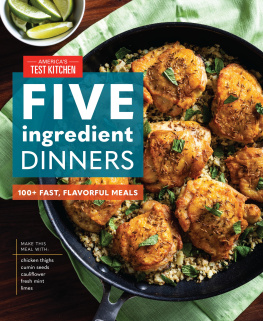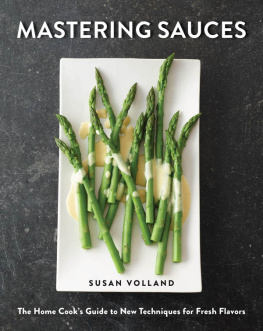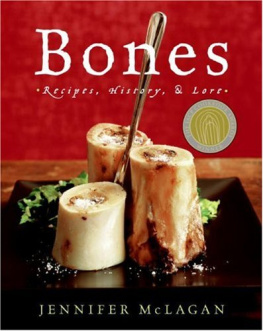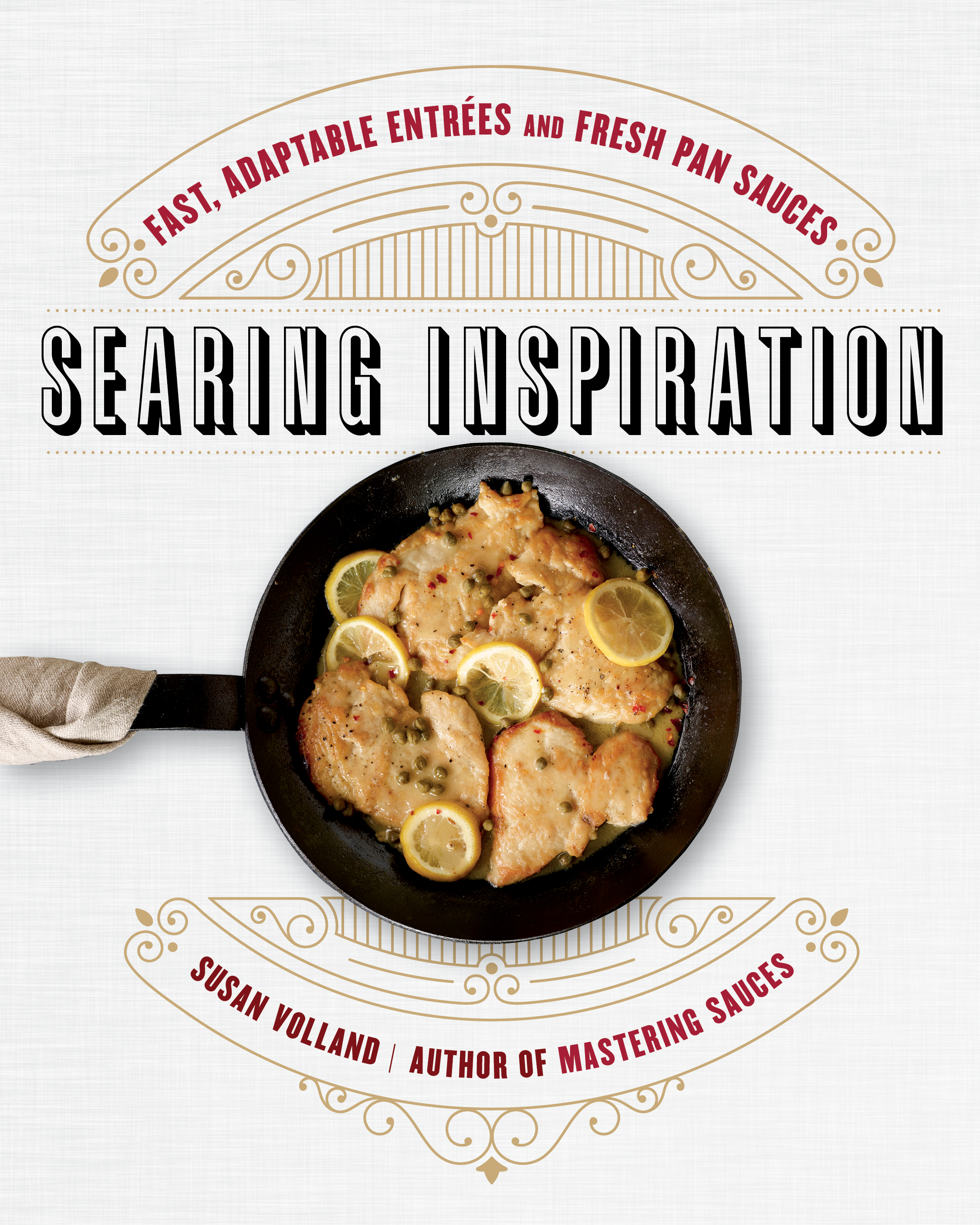Contents
Guide
Page List
FOR SHELLEY, MY SISTER DRAGON
If you are going to follow links, please bookmark your page before linking.
CONTENTS

SEARING FOODS AND MAKING FRESH SAUCES IN A HOT SKILLET CAN BE A GAME changer for busy cooks. Its fast, but there are few, if any, cheats or shortcuts. Its real cooking, like what you see on a restaurant line. Ingredients arent just simmered, baked, boiled, or zapped in a microwave. A hot skillet requires continuous interaction. There is sound and steam and, if you feel frisky, maybe even a lick of flame. Chicken, garlic, a splash of wine, and a dollop of butter are simple ingredients, but the finished seared and sauced dish is far from simplistic. The chicken is savory and golden brown but still juicy. The sauce is complex, with depth, aroma, and a touch of brilliance from the slightly acidic wine. A single pat of butter adds silkiness and subtle luxury. Its a meal you want to eat sitting down at the table, with knives and forks, even when it will be only a few minutes before everyone has to start running again.

W ith every seared and sauced recipe you make, your skills and knowledge grow exponentially. You become more efficient, and it all starts to feel very natural, perhaps even exciting. Pan sauces were traditionally perceived as exclusive, indulgent, and expensive. They were made tableside at fine-dining restaurants. Silky tournedos of beef or tender veal scaloppini were sizzled with shallots, theatrically flambed with Cognac or a fancy wine, and finished with heaps of cream and butter. Dishes such as these were so artfully prepared that re-creating them at home was hardly even an option. As popular tastes pivoted to fresh, lighter, bolder foods, formal tableside performances were traded in for more exciting open-kitchen floor plans. Pan sauces got more exotic and sometimes even spicy. They were often bound with specialty oils and reductions rather than butter and cream. But the mystique of pan sauces has never waned. Watching a cook skillfully flash-sear and saut ingredients in a skillet and then, moments later, having a dazzling sauced entre placed before you is still a culinary magic show.
The speed at which a novice cook can graduate from captive audience member to performer is my favorite part of teaching pan sauces. The skillet, perceived as being perhaps the simplest of all kitchen tools, is utterly exasperating when it doesnt work the way you want it to. Ingredients stick to the pan. Meats weep and simmer rather than brown. A scorched piece of fish or chicken can fill the kitchen with smoke and yet still remain raw in the middle. The most common solution? I need a good frying pan. When the food still doesnt improve, another is bought, this time with a magic coating or shocking price tag. Ive heard frustrated cooks blame their stoves, insisting that they will only get restaurant-quality results if they have a restaurant-quality range. While Ill never dissuade someone from investing in a good skillet or stove, the tools are rarely the problem. Sure, scratched, wobbly frying pans on teetering, tilted, or clogged burners are not the easiest road to success, but its knowledge and familiarity with your equipment that really matters. Once you are armed with some simple tips, like how to heat the pan, add the oil to it, and arrange the ingredients in it, foods start to behave. They sizzle and brown, and the kitchen fills with tempting aromas instead of curses.
If you think theres a problem, put on the brakes.
Make adjustments. One of the best things about cooking in a skillet is the responsiveness it allows you.
Watching chefs zoom around a hot line, shooting ingredients into smoking-hot skillets and then flipping and clanging things for a quick minute before everything is plated and whisked to the table can make it seem as if high temperatures and speed equal proficiency. Thats not the case. The chefs you are watching have made those dishes hundreds of times. Their prepped ingredients are at their fingertips, and they know exactly which burners are sluggish and which are flamethrowers. They have a dozen things going at once and an audience of hungry diners watching their every move. But yours is not a restaurant kitchen. The first step toward mastering a hot skillet is to slow things down.
First, have a clear idea of what you want and plan how to get there. Take the time to get all your ingredients prepared, measured, and arranged before you step anywhere near the stove. Chefs call this their mise en place (see ). Instead of cranking the burner to the highest heat, let the pan gradually heat up to the desired temperature. Arrange the food in the skillet deliberately, with care, and then try to leave it alone. Pay attention to sounds and smells, though, as it cooks.
If you think theres a problem, put on the brakes. Make adjustments. One of the best things about cooking in a skillet is the responsiveness it allows you. If a fish fillet doesnt sizzle when you touch it to the oil, pull it out, let the pan heat up some more, and then try againdont just add another piece of fish to the pan and hope for the best. If, on the other hand, the oil starts smoking the moment you swirl it into the skillet, or the fish spits and crackles, the pan is too hot. Lift it off the burner to cool things down quickly. Rescue those tender fillets before its too late. If, when you are cooking, the searing is going great but the pan residue starts to blacken, or the minced garlic burns when you start the sauce, stop! Its far better to let the seared food sit on a plate for a minute or two while you clean the pan or chop some fresh aromatics than to forge on and then have to choke down an entre that is infused with those unpleasant flavors. These things happen to everyone, even professionals; pros just fix stuff faster.
I put a lot of emphasis on skillful searing, but my heart is in sauce making. Juicy, well-seared entres can stand alone, but they are exponentially improved with a drizzle of artful sauce. When you build a pan sauce on a base of a perfect fond, you instantly link the two elements, entre and finishing sauce, resulting in not just another piece of meat or chicken on the plate, but a unified, complex dish. Seared chicken adds an essence of chicken flavor to the sauce. If you substitute salmon fillets or shrimp, the sauce will have a nuance of seafood. The savory juices that were released during the cooking process are recaptured and reintroduced into the final preparation. Just dont expect a fantastic pan sauce to camouflage a poorly cooked or less-than-fresh main ingredient, and remember that few things can cheapen a prime steak faster than a glop of lazy sauce.
My hope is that by reading this book, you will become more comfortable with your ingredients and tools, will cook with more spontaneity, and, eventually, will trust your own taste and instincts enough to create unique dishes with ingredients on hand rather than be strictly bound to written recipes. At the market, instead of leaning on your shopping cart, staring blankly at the displays and awaiting dinner inspiration, you will search out the freshest items and best deals. And, like me, you will keep your kitchen stocked with staples such as fresh garlic, shallot, wines, and herbs, with a stash of chicken, shrimp, and steaks in the freezer. So, when you get home from the market, you can turn on the music, and maybe sip some wine, while you throw something together. And youll still have time to make that parent-teacher meeting or evening class, or even enjoy some well-deserved couch contact. The pizza guy will just have to manage without you.











